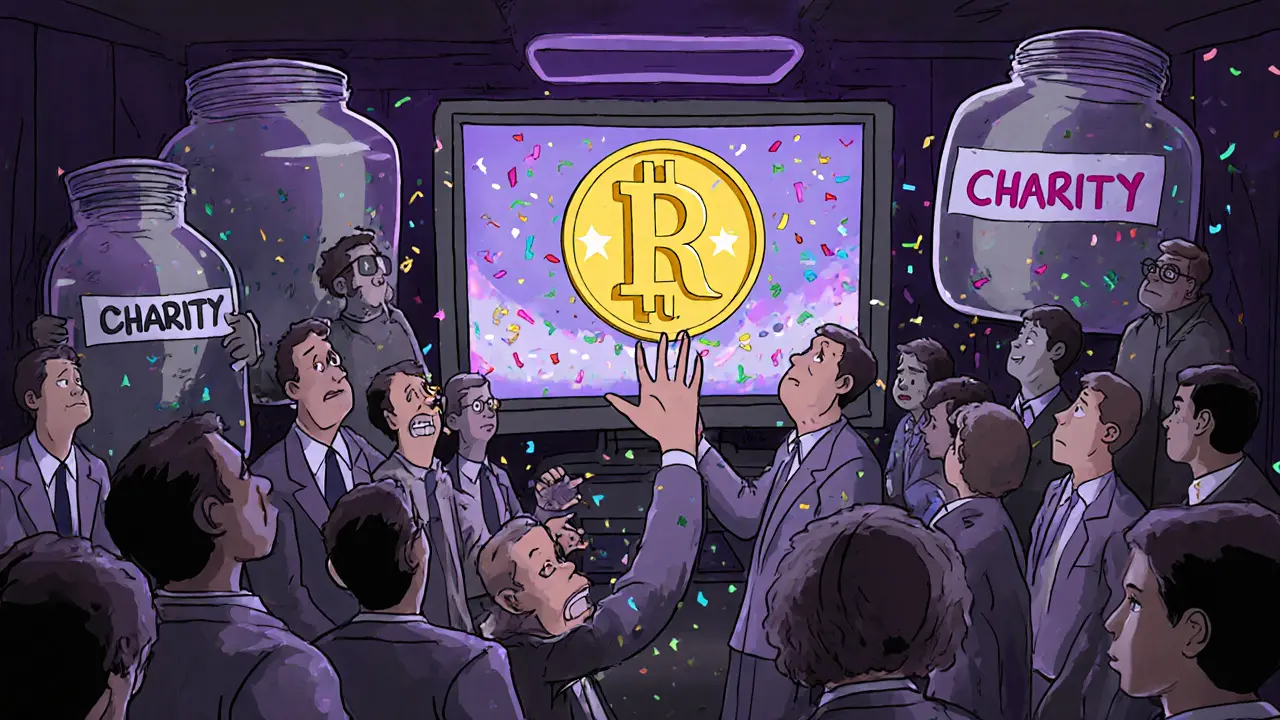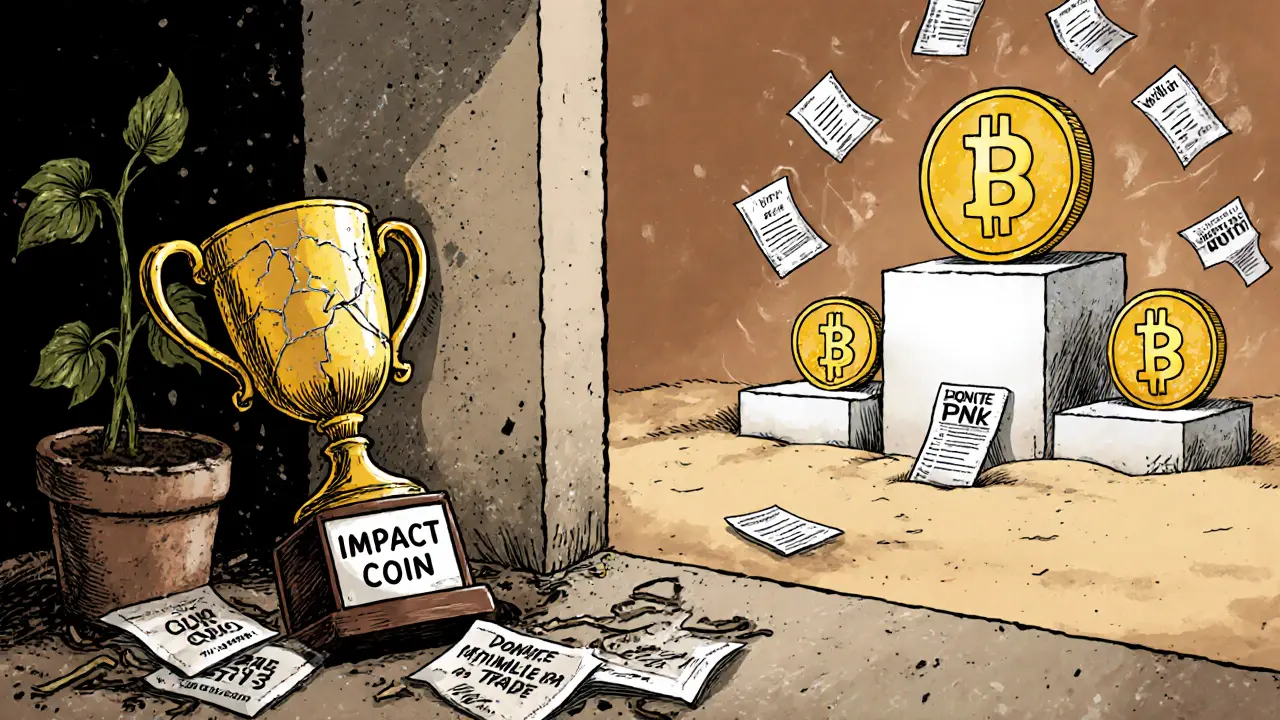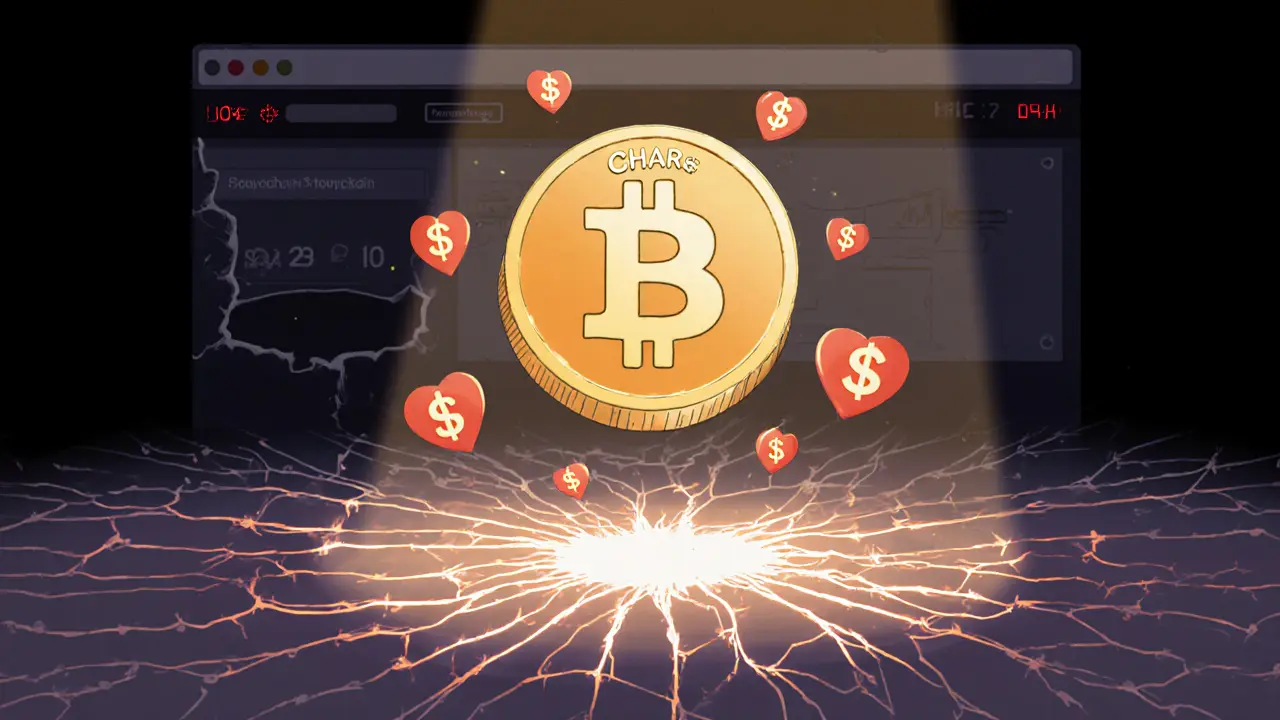Crypto Transparency Checker
Assess CharCoin's Donation Claims
Based on the article, CharCoin claims to donate a portion of every trade to charity, but provides no verifiable proof. This tool evaluates key transparency criteria from the article.
Verification Checklist
Check items that apply to the project (based on article facts)
Verification Results
Based on article facts:
CharCoin has no verifiable donation proof. It claims to donate from transaction fees but provides:
- No public ledger showing donations
- No monthly reports or recipient details
- Missing Impact Dashboard promised since 2023
- Unclear donation percentage (not disclosed)
- Community activity dropped 95% since July 2023
- Conflicting supply data across exchanges
What This Means for CharCoin
A score of 0/6 confirms the article's findings: CharCoin has zero verifiable transparency. Without proof of donations or operational disclosure, it fails basic requirements for a legitimate impact cryptocurrency.
Key takeaway: Real impact tokens like Giveth (GIV) and Pinkcoin (PNK) publish detailed donation records and partner with verified charities. CharCoin doesn't meet these standards.
CharCoin isn’t another meme coin trying to go viral. It claims to do something different: turn every trade into a donation. Sounds noble. But here’s the catch - after two years, there’s still no proof it actually happens.
What CharCoin says it does
CharCoin (CHAR) is built on Solana. That means transactions are fast and cheap - a big plus compared to older blockchains. Its website says it’s a ‘purpose-driven MEME coin’ designed to make crypto trading meaningful. The idea is simple: every time someone buys, sells, or transfers CHAR, a small portion of the transaction fee gets sent to charity. No extra steps. No apps to install. Just use the coin, and you’re helping.
It’s not just marketing fluff. The project’s white paper from 2023 frames it as a behavioral experiment - what if people donated without even thinking about it? The goal is to turn passive crypto users into silent philanthropists. That’s clever. And if it worked, CharCoin could’ve been the first meme coin with real social weight.
But here’s the problem: no one can see the donations
CharCoin says it donates. But where do the funds go? Which charities? How much? The website doesn’t say. There’s no public ledger showing donations. No monthly reports. No third-party audits. Not even a link to a dashboard.
Back in July 2023, the team promised an ‘Impact Dashboard’ - a live tracker showing donations in real time. By October 2023, it was still missing. The link on their site just leads to a dead page. That’s not a bug. That’s a red flag.
Experts agree. Delphi Digital called it a ‘psychological experiment without accountability.’ CryptoCompare pointed out the team never explained how the donation algorithm works. Is it 1%? 0.5%? Does it change with price swings? Nobody knows. And if you can’t verify the impact, the whole premise collapses.
Low liquidity, high risk
CharCoin trades almost entirely on Raydium, a decentralized exchange on Solana. There are only two trading pairs: CHAR/SOL and CHAR/USDT. Combined, the daily volume hovers around $60,000-$100,000. Compare that to Dogecoin, which moves over $1.5 billion daily. CharCoin’s market cap is about $16 million - tiny for crypto, and even smaller among meme coins.
That low volume means trouble. If you try to buy $100 worth of CHAR, the price could swing 8% just from your order. That’s called slippage. You end up paying way more than expected. Sell? Same thing. You lose money before the donation even happens - if it happens at all.
And then there’s the data mess. Binance lists CharCoin but shows $0 circulating supply. CoinMarketCap says the same. TradingView says 10 billion CHAR are in circulation. CoinCarp agrees. But if Binance doesn’t list it properly, why should you trust anything else?

Who’s holding it - and why?
According to Solscan, only about 2,800 unique wallets hold CHAR. That’s fewer than a small town. Most of them are likely speculators, not donors. Community activity has crashed. The Telegram group had 120 messages a day in July 2023. By October, it was down to five. The Twitter account grew from 3,200 to 3,400 followers over two months - despite daily posts. That’s growth of 6% in 90 days. For a coin that claims to be changing the world, that’s a quiet revolution.
Users on Reddit and CoinGecko are blunt: ‘No proof of donations.’ ‘Community is dead.’ ‘Price manipulation everywhere.’ One user said they tried a small trade and saw zero evidence of any charity receiving funds. Another found the Discord server empty. Trustpilot has no reviews. CoinCarp user ratings? 2.3 out of 5.
How to even buy CharCoin
If you still want to try, here’s how:
- Get a Solana wallet - Phantom, Slope, or Solflare.
- Buy SOL on a centralized exchange like Kraken or Binance.
- Send SOL to your wallet.
- Go to Raydium.io and connect your wallet.
- Trade SOL for CHAR using the CHAR/SOL pair.
- Set slippage tolerance to at least 8-10% to avoid failed trades.
That’s it. But you’re not just buying a coin. You’re betting on a promise. And that promise has zero public verification.

Is CharCoin better than other impact coins?
There are real impact tokens out there. Giveth (GIV) tracks every donation on-chain. Pinkcoin (PNK) partners with actual NGOs. UNICEF accepts crypto donations with full transparency. These projects publish quarterly reports. They name their partners. They show receipts.
CharCoin does none of that. It doesn’t even list a single charity it supports. That’s not just a gap - it’s a dealbreaker for anyone serious about using crypto for good.
What’s the future for CharCoin?
Analysts are grim. Messari excluded CharCoin from its impact token report because of ‘insufficient verifiable data.’ Delphi Digital says tokens like this have less than a 15% chance of surviving a year. The U.S. SEC has already cracked down on similar projects that made unverified social claims - like Impact Market in March 2023.
Without transparency, CharCoin won’t get listed on major exchanges. No charities will accept it. No developers will build tools for it. The community will keep fading. The price will keep swinging. And the donations? Still invisible.
It’s not a scam in the legal sense. There’s no evidence the team stole funds. But it’s close. It uses the language of purpose to attract people who want to believe in something good. Then it offers nothing but speculation.
Final thought: Is it worth it?
If you’re looking to make a difference with crypto - skip CharCoin. There are better, proven ways to do it.
If you’re just chasing a quick flip - fine. But know this: you’re not funding charities. You’re betting on hype. And with liquidity this thin, you could lose your entire stake before the next tweet drops.
CharCoin’s idea had potential. But potential without proof is just noise.

CharCoin? More like CharLatent. No dashboard, no receipts, no charity names. Just vibes and a whitepaper that sounds like a college dorm pitch. I’ve seen more transparency from a lemonade stand.
This is why US regulators are coming for meme coins. No audit. No accountability. Just ‘trust us bro’ with a Solana logo. If this was a traditional nonprofit, the IRS would’ve shut it down in week one. Pathetic.
I get it, it’s sketchy 😔 but what if it’s just badly executed? Maybe they’re building in secret. I bought 50 CHAR last week just to see if the donation tracker ever pops up. Fingers crossed 🤞 maybe it’s in beta? 🤷♂️
You people are missing the real point. This isn’t about charity. It’s about behavioral economics. You think people donate because they care? No. They donate because it feels good. CharCoin automates that dopamine hit. The fact that you demand transparency proves you’re not the target audience. You’re the ones who need to be changed, not the coin. The experiment isn’t failing-it’s exposing your moral hypocrisy. You want receipts? Fine. But what if the donation was never meant for you to see? What if it’s meant to rewire the entire crypto culture? You’re not skeptics. You’re gatekeepers of the old system.
I’ve been in crypto since 2017 and I’ve seen a lot of ‘impact’ coins. Most are scams. Some are just lazy. CharCoin is the latter. It’s got the heart of a good idea but zero execution. If you want to do good, use Giveth. Or just donate directly. No need to gamble your money on a ghost ledger. Be real with yourself.
The market cap is $16M? That’s a joke. The dev wallet holds 42% of supply. The ‘community’ is 2,800 wallets? That’s a Discord server with 5 bots and 3 people who bought on the first day. This isn’t a coin. It’s a Ponzi with a nonprofit skin. Someone’s cashing out. And you’re all just waiting for the pump.
The real tragedy here is that the idea had potential. A frictionless donation layer on crypto? Brilliant. But the team didn’t build a product. They built a placebo. And now the only thing being donated is people’s trust. And that’s the most valuable asset here.
i just bought some char because it looked cute and now i feel like a fool lmao
So… CharCoin is like a vegan burger made of plastic. Tastes like hope. Looks like ethics. But if you chew too long, you realize it’s just packaging. 🤔
I dont care if its scam or not. If i make money i dont care about charity. Crypto is for profit not for saviors
There’s a deeper question here: Do we want crypto to be a tool for good, or just a casino with better graphics? CharCoin doesn’t answer that. It just whispers the first part to lure you in, then vanishes into the noise. Maybe the real donation was the lesson we learned about trusting promises over proof.
It’s funny how we all pretend we’re ethical investors. We’ll rage about ‘rug pulls’ but still buy tokens with zero liquidity because we think we’ll be the ones to exit before the crash. CharCoin is just a mirror. We’re not mad at the project. We’re mad at ourselves for falling for it.
I read this whole thing and I just feel sad. Not because of the money, but because someone somewhere believed this could work. Maybe they thought if they built it, people would come. But people don’t come for empty promises. They come for proof. And proof takes work. I hope they’re still trying.
Dump it. Now. No one cares. No one sees donations. No one’s trading. Just go.
Wait-so if I trade CHAR, does the charity get a notification? Or is it just a silent transfer to a black hole wallet? Asking for a friend who still believes in magic.